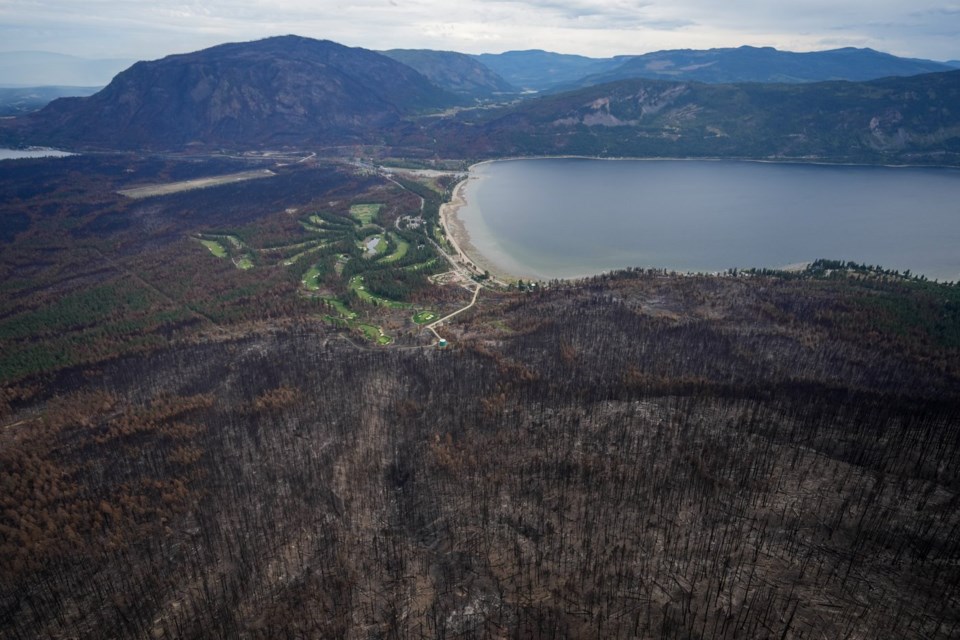British Columbia says it is not ruling out regulating wild mushroom picking after an Indigenous community said a rising number of foragers are infringing on its land, with one case involving alleged threats of physical violence and intimidation.
The provincial response comes after the Skwlax te Secwepemculecw First Nation said the areas devastated by the Lower East Adams Lake and Bush Creek wildfires last year are now sprouting large numbers of morel mushrooms, attracting many foragers who are putting new pressures on the land's fragile ecosystem.
"It's what they leave behind that is the problem and the devastation, the damage they're doing cutting trees down," said Chief James Tomma. "We're seeing the unwanted killing of the wildlife who are under a lot of stress right now and really vulnerable."
In a written statement, the B.C. Ministry of Forests said it is continuing to "monitor the situation and may take steps in the future, should circumstances indicate a change is needed."
"Picking mushrooms is an activity shared by many people in B.C. and there is no licence requirement at this time," the statement said. "We are deeply concerned, and everyone should be aware and respectful of the First Nation territories they are on.
"At this time, we are working together with Skwlāx Nation to monitor any activities that may have a negative impact on the environment."
Mushroom experts said now may be the time for B.C. to look at possible changes in regulating foraging in the province, given the possible increases in the number and intensity of wildfires and morel mushrooms' tendency to thrive on land in the year directly after a blaze.
"The province has grappled with this issue before, and in the end — twice that I'm familiar with, including one that I was quite involved with — they backed away from any kind of regulation of pickers or buyers," said B.C. forest ecologist Andy MacKinnon.
"My own personal opinion is that I think it's a system that's not working too badly. But if we are getting into situations like the one with morels in the southern Interior right now, perhaps it's time to have another look at that question."
MacKinnon said morels thrive on freshly burned land for a number of reasons, including more access to sunlight in lieu of tree cover, the warming of the soil and the nutrients found in the ash that's left behind.
It means more conflicts over morel picking may arise as the number of wildfires in B.C. increases, creating more waves of crops on lands where different parties rush in to forage them in an unregulated environment.
Last year's record-setting wildfire season in B.C. saw 28,400 square kilometres of land scorched by blazes, with tens of thousands forced to evacuate and hundreds of homes and structures lost.
The BC Wildfire Service said drought conditions in parts of the province have led to an amplified risk of "holdover fires" smouldering underground over the winter that could re-emerge in the spring and summer, with more than 100 such blazes listed in January.
One such holdover fire is the out-of-control, 673-square-kilometre Patry Creek blaze north of Fort Nelson, the largest wildfire of note in B.C. as of Saturday.
"Climate change is projected to warm and dry climates in the summer time and create conditions for more explosive wildfires," MacKinnon said. "So we can expect, if we get the projected increase in number and area covered and intensity of wildfires, to get corresponding booms in the fire morels."
Tomma said that reality has already arrived for the Skwlax te Secwepemculecw, where residents are already preoccupied with rebuilding their homes after last year's wildfires when the rising number of foragers began showing up to pick morels.
He said one case even involved "an individual (who) felt it was his right" to be on Nation land, and there was "some physical violence and intimidation" that took place, although he declined to comment further as the case has been reported to police.
"That was one of the instances that spurred (the thinking of), OK, now we need to take affirmative action here," Tomma said. "We decided, 'OK, enough's enough, nobody else is gonna do anything.' I do have guardians that are going out there now, trying to not be confrontational, but asking people to at least be respectful."
Tomma said the guardians are being put in place not only to protect the freshly burnt land but also the mushroom pickers themselves, as the post-wildfire terrain can be dangerous and many foragers are "weekend warriors" who are at risk of hurting themselves.
He said while foragers would be required to get permission from Nation officials before entering the land and picking morels, he is currently focused on working with the province on a "collaborative system" to ensure people's safety and environmental protection.
"It's still in its fundamental stage right now where we're trying to build that working relationship that will hopefully last beyond our lifetime," Tomma said. " … As the original stewards of the land, we would like to be given stewardship of the watersheds that fall within our traditional territory."
Online listings show the price of fresh wild Canadian morel mushrooms at around $30 per pound.
This report by The Canadian Press was first published June 9, 2024.
Chuck Chiang, The Canadian Press



